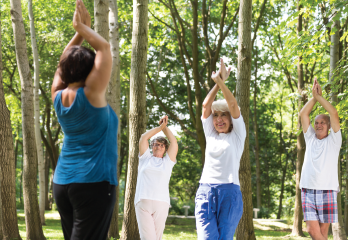
Photographee.eu / shutterstock.com
ACR CONVERGENCE 2020—Research has shown time and again the benefits and low risk of physical activity for people with rheumatic diseases, but only a third or less of patients meet guidelines for this activity, Patricia Katz, PhD, professor of medicine and health policy at the University of California, San Francisco, said in the ARP Distinguished Lecture: How to Promote Physical Activity and Its Benefits for Patients with Rheumatic Diseases. With better counseling by providers, patients would likely boost their activity levels, she said.
“Probably the most important reason people with rheumatic diseases are not exercising is that they’re not getting the message that physical activity is a good thing for them, that it’s beneficial for their disease. And they’re not getting that message from their physician or other healthcare providers—at least not in a meaningful way,” Dr. Katz said.
Moderate to vigorous activity has been associated with a lower risk of disability onset and progression in osteoarthritis, and less sedentary time has been associated with better function.1 In a 10-week program involving 30 minutes of activity three times a week, high-intensity interval walks were linked to a significant decline in disease activity in swollen joints and improvements in physical function.2
Despite anxiety among patients that exercise and physical activity could worsen symptoms or bring on new symptoms, little evidence indicates this is the case, Dr. Katz said.
“Exercise is recognized as safe—it’s been recommended for people with rheumatic muscular and skeletal diseases for quite some time,” she said. The ACR’s guidelines for managing osteoarthritis include physical activity and exercise.
Studies Find Exercise Reduces Pain

Dr. Katz
Studies of exercise interventions have generally shown that they produce reductions in pain. A study of the Arthritis Foundation’s Walk with Ease, a six-week, community-based program, for example, found that both a self-directed program and a group format produced an 8-point drop on the 100-point Visual Analog Scale to measure pain.3
“There’s actually reason to think that physical activity might change central pain processing, which might explain why we see these reductions,” Dr. Katz said.
Still, only 20–30% of those with rheumatic diseases meet physical activity guidelines—and that’s by self-report, so the actual numbers are probably even lower, she said.4
Physical Activity Can Reduce Fatigue
Research has also shown that physical activity can help with fatigue, a common problem for people with rheumatic diseases.
In 2016, Dr. Katz led a study that included home visits with 158 patients with rheumatoid arthritis (RA) and conducted comprehensive assessments to look for factors associated with RA, as well as factors not associated with RA, that may contribute to fatigue. They found that depression, poor sleep and obesity were independently associated with fatigue, with physical activity also playing a role but mediated by the other three factors.5
A study Dr. Katz had published in 2018, called PARAFit, for Physical Activity to Improve RA Fatigue, set out to test a physical activity intervention that was less costly and complex than previous such efforts, and therefore more accessible and practical, to try to improve fatigue. Researchers enrolled 96 participants with moderate levels of fatigue and who weren’t currently exercising.6


